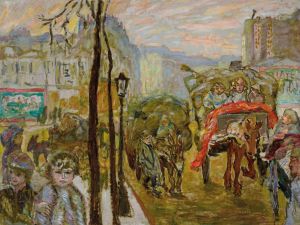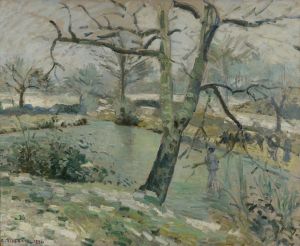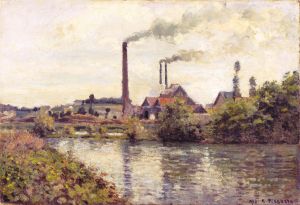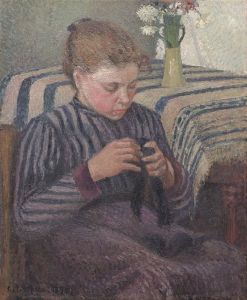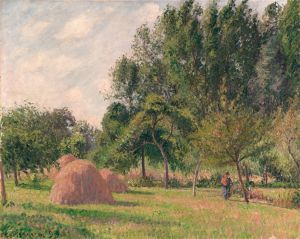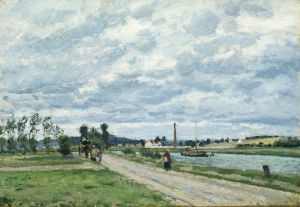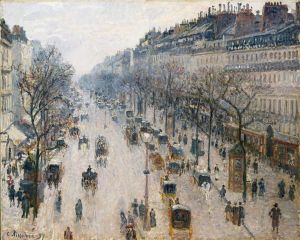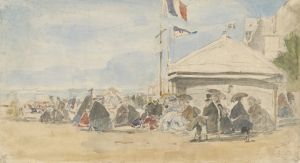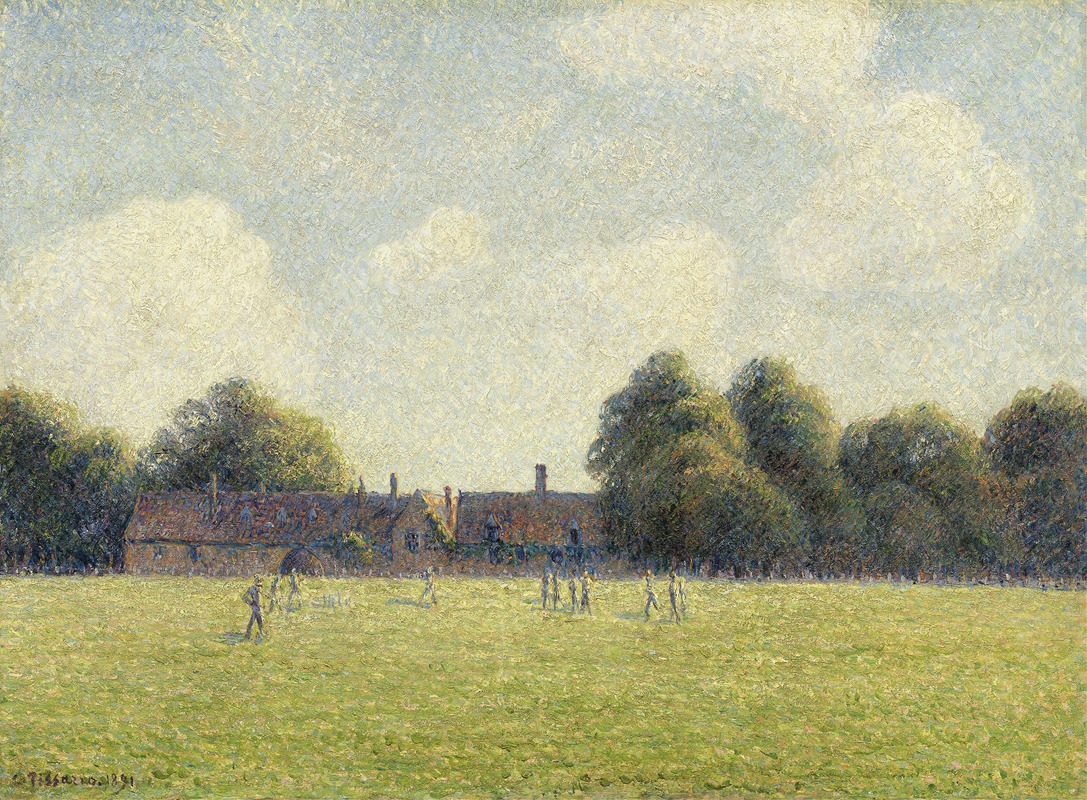
Hampton Court Green
A hand-painted replica of Camille Pissarro’s masterpiece Hampton Court Green, meticulously crafted by professional artists to capture the true essence of the original. Each piece is created with museum-quality canvas and rare mineral pigments, carefully painted by experienced artists with delicate brushstrokes and rich, layered colors to perfectly recreate the texture of the original artwork. Unlike machine-printed reproductions, this hand-painted version brings the painting to life, infused with the artist’s emotions and skill in every stroke. Whether for personal collection or home decoration, it instantly elevates the artistic atmosphere of any space.
Camille Pissarro's painting Hampton Court Green is a work created by the renowned French Impressionist artist during his stay in England. Pissarro, known for his landscapes and depictions of rural and urban life, painted this piece in 1891. The painting captures the serene and expansive view of Hampton Court Green, a public space located near Hampton Court Palace in Surrey, England.
The artwork reflects Pissarro's characteristic Impressionist style, with its emphasis on light, atmosphere, and the natural environment. The scene is rendered with loose, vibrant brushstrokes that convey the changing effects of light and weather. The composition includes open green spaces, trees, and pathways, with a sense of tranquility that aligns with Pissarro's interest in depicting everyday life and landscapes.
Pissarro's time in England was part of a broader trend among French artists of the 19th century who sought inspiration outside of France. He visited England on several occasions, including during the Franco-Prussian War (1870–1871) and later in the 1890s. His works from these visits often depict the English countryside, gardens, and urban scenes, showcasing his ability to adapt his Impressionist techniques to different settings.
Hampton Court Green is an example of Pissarro's ability to capture the essence of a place while maintaining his focus on light and color. The painting is part of the collection of the Ashmolean Museum in Oxford, England, which houses a significant number of works by Pissarro and other Impressionist artists. The Ashmolean Museum, as one of the oldest public museums in the world, provides a fitting home for this piece, allowing visitors to appreciate Pissarro's contribution to the Impressionist movement and his interpretation of the English landscape.
This painting is a testament to Pissarro's versatility and his dedication to exploring the interplay between nature and human presence. It remains an important example of his work during his later years, reflecting his continued interest in capturing the beauty of the world around him.





